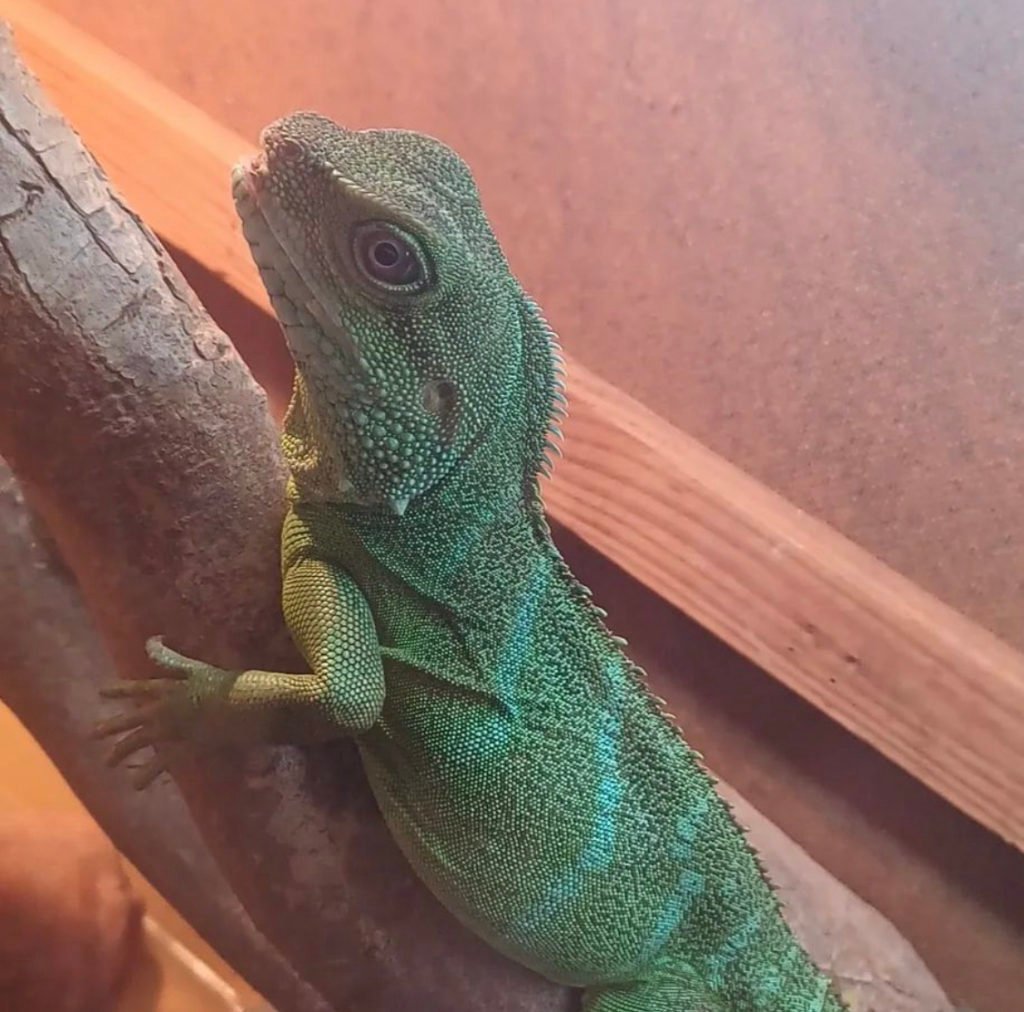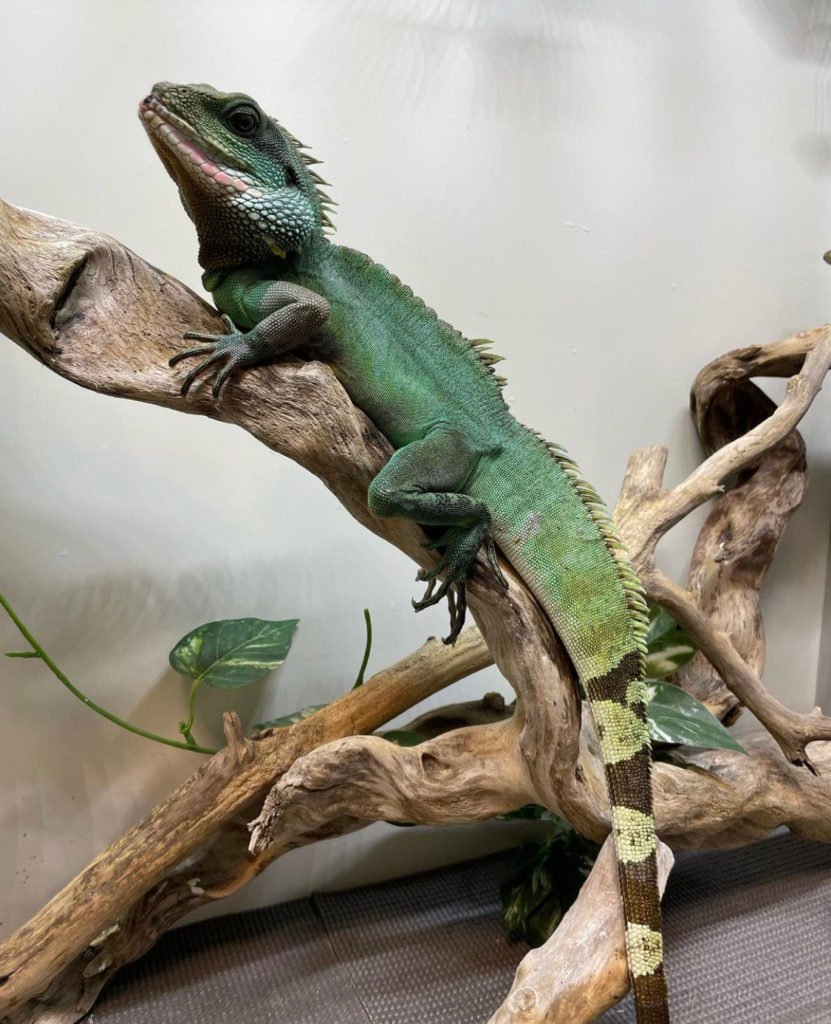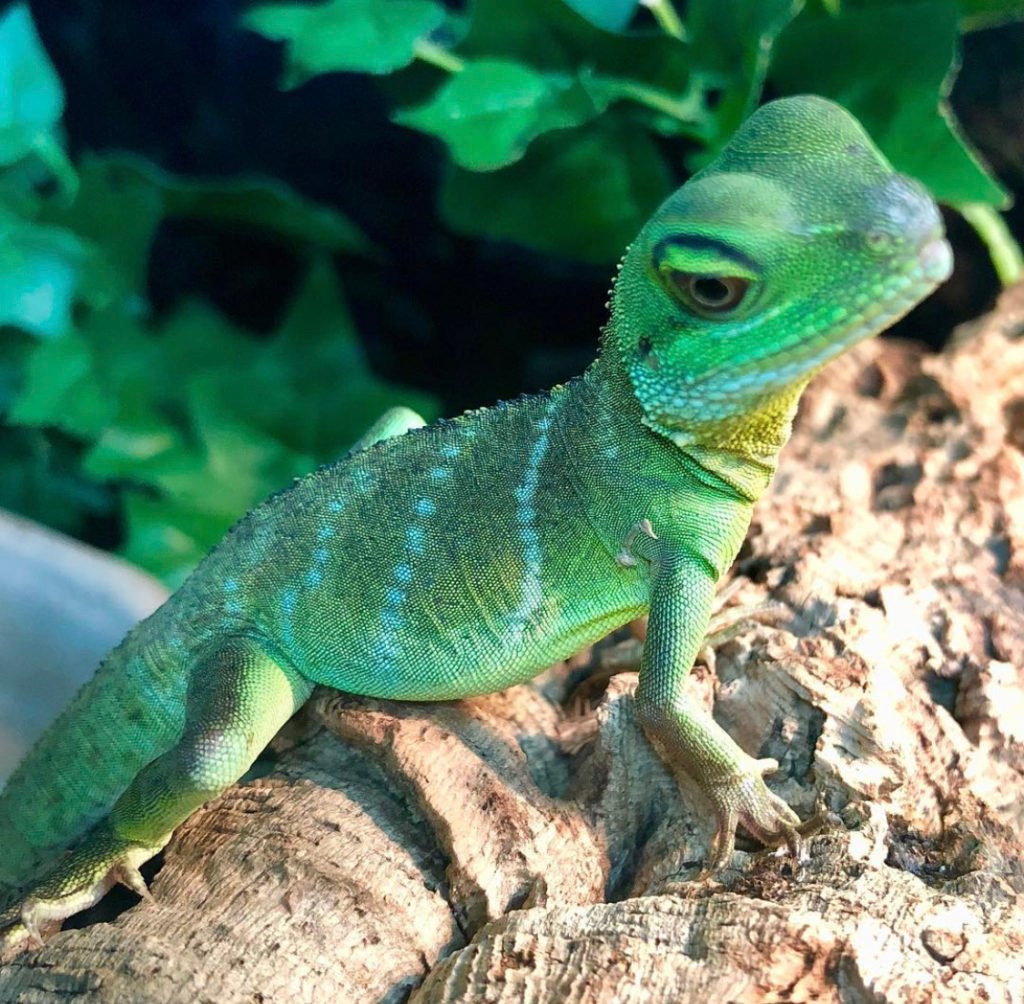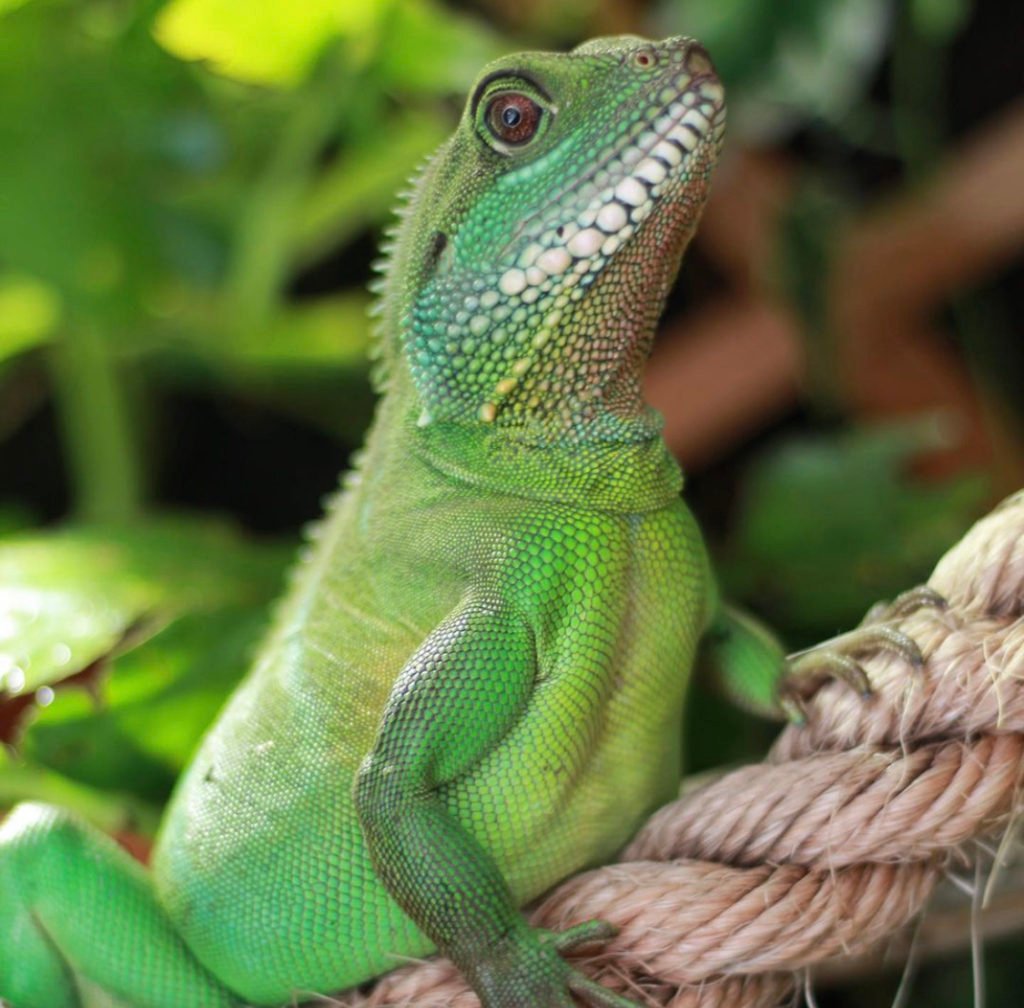The Chinese Water Dragon, a mystical creature that has captivated people’s imagination for centuries, is a fascinating reptile with unique characteristics. In this article, we will explore this creature’s physical features, habitat, and distribution and delve into ten interesting facts that make it one of the most intriguing creatures of the reptile world.
Physical Characteristics Chinese Water Dragons

Water Dragons are known for their long, slender bodies, reaching up to 3 feet long. Their distinctive, spiky crest runs down their back and tail. Their coloration varies depending on age and sex, with males having more vivid colors than females. They can live up to 20 years in captivity.
Size and weight
Chinese Water Dragons can weigh up to 3 pounds, with males generally more prominent than females.
Coloration and markings
Their coloration ranges from green to brown, with patterns of stripes, spots, and patches. Their underbelly is typically pale yellow or green.
Lifespan
In the wild, Chinese Water Dragons can live up to 15 years, while those in captivity can live up to 20 years with proper care.
Habitat and Distribution

Another facts about Chinese water dragons are native to the forests and tropical rainforests of China, Vietnam, and Laos. Their ideal habitats feature easy access to running water like rivers, streams, and ponds. Sadly, deforestation and habitat destruction constitute a danger to their natural environments.
Native range
Chinese Water Dragons are native to China, Vietnam, and Laos, where they live in the forests and tropical rainforests.
Preferred habitats
They prefer areas with abundant water sources, such as streams, rivers, and ponds, where they can find shelter and food.
You may also interest: Don’t Miss Out on These Incredible Kinds of Bearded Dragons
Chinese Water Dragons Diet and Behavior
The Chinese Water Dragon, a creature that has intrigued people for centuries, is known for its unique physical characteristics and behaviors.
Typical diet
Chinese Water Dragons are omnivorous, feeding various foods, including insects, fish, rodents, and vegetation. Juvenile dragons have a primarily insect-based diet, while adults consume more plants and larger prey.
Hunting and feeding behavior
Chinese Water Dragons are excellent hunters, using their keen senses and agility to catch prey. They are opportunistic hunters and will eat whatever they can find. They are known to hunt both on land and in water.
Social behavior other facts about Chinese Water Dragons
Although typically solitary, Chinese Water Dragons sometimes congregate in small groups in the wild. They communicate using body language and vocalizations, such as hissing and growling. They are also territorial and will defend their space from other dragons.
Reproduction and Offspring facts about Chinese water dragons

Chinese Water Dragons reproduce sexually, with males displaying courtship behaviors to attract females. Mating occurs during the rainy season, and females can lay up to 20 eggs.
Mating behaviors
Males use head-bobbing and other physical displays to attract females. When a female is selected, mating can happen on land or in the water.
Egg-laying and incubation
After mating, females lay their eggs in a nest, typically a burrow or hole in the ground. Pregnancy takes up to 90 days, with the temperature of the nest determining the sex of the offspring.
Parental care other facts about Chinese water dragons
The young are left to fend for themselves once they hatch. They’re on their own now and must figure out how to survive
You may Also Interest: Exploring the Fascinating World of Blue Tongue Skinks Types
10 Interesting facts about Chinese Water Dragons

Fact #1
Chinese Water Dragons are not true dragons. Despite their name, Contrary to popular belief, Chinese Water Dragons have no connection to the mythological, fire-breathing dragons of legend. They belong to the agamid lizard family and are native to the forests and waterways of Southeast Asia.
Fact #2:
They are excellent swimmers and climbers. Chinese Water Dragons are highly adaptable creatures equally comfortable on land or in water. With the help of their long tails, they are proficient swimmers. Its strong claws let them climb trees and rocks.
Fact #3:
Chinese Water Dragons can change color. Chinese Water Dragons can change color, blending into their surroundings and avoiding predators. Depending on their mood or environment, they can vary from bright green to brown or grey.
Fact #4:
They are diurnal animals Chinese Water Dragons are active during the day and sleep at night. They sit on rocks or trees in the sun to maintain their body temperature.
Fact #5:
Chinese Water Dragons can communicate using body language. Chinese Water Dragons use various body language and vocalizations to communicate with each other. They bob their heads, puff out their throats, and even do push-ups to signal dominance or submission.
Fact #6:
They have a unique hunting strategy. Chinese Water Dragons are ambush predators and have a unique hunting strategy. They will patiently wait for their prey to come within striking distance before pouncing on them with lightning-fast speed.
Fact #7:
Chinese Water Dragons have a third eye. Chinese Water Dragons have a small, pineal look on the top of their head. This third eye is sensitive to light and dark and helps them regulate its circadian rhythm.
Fact #8:
The popular Chinese Water Dragons are famous for their unique appearance and docile temperament. However, they require a specialized diet and environment, making them challenging pets to care for.
Fact #9:
Some say seeing a Chinese water dragon can bring you luck. The Chinese Water Dragon symbolizes good fortune and prosperity in Chinese culture. They are often the subject of artistic and literary works and are honored in countless celebrations.
Fact #10:
They are considered a vulnerable species. Due to habitat destruction and deforestation, Chinese Water Dragons are considered a vulnerable species. Conservation efforts are underway to protect their natural habitat and ensure their survival.

